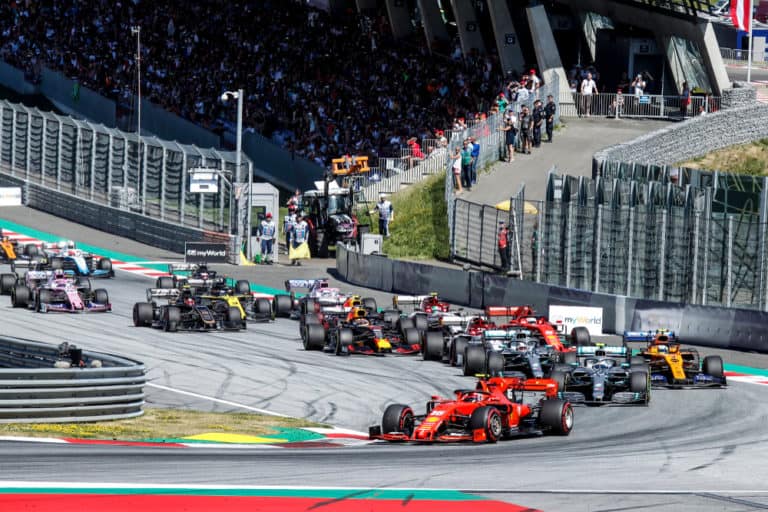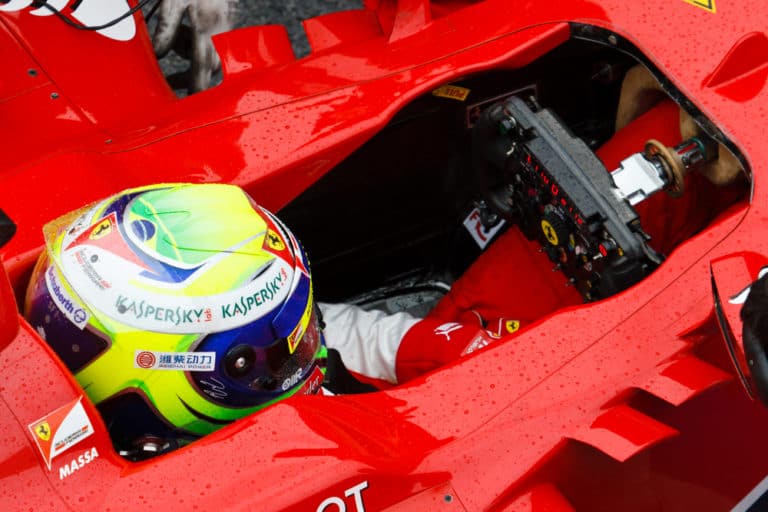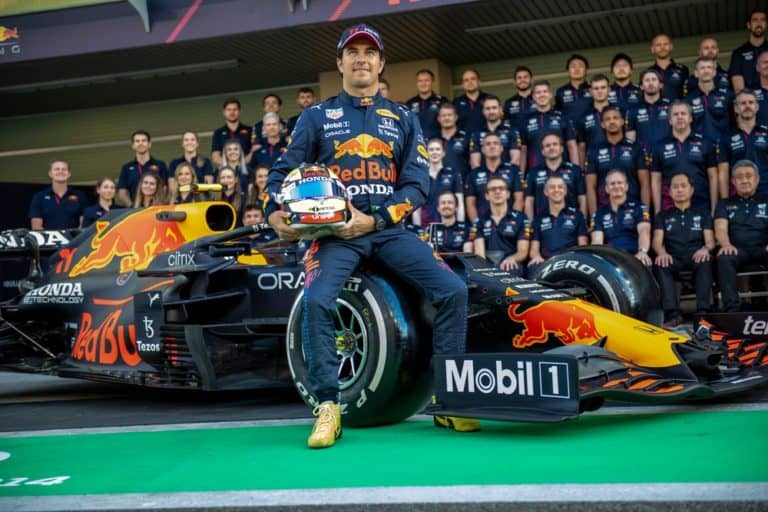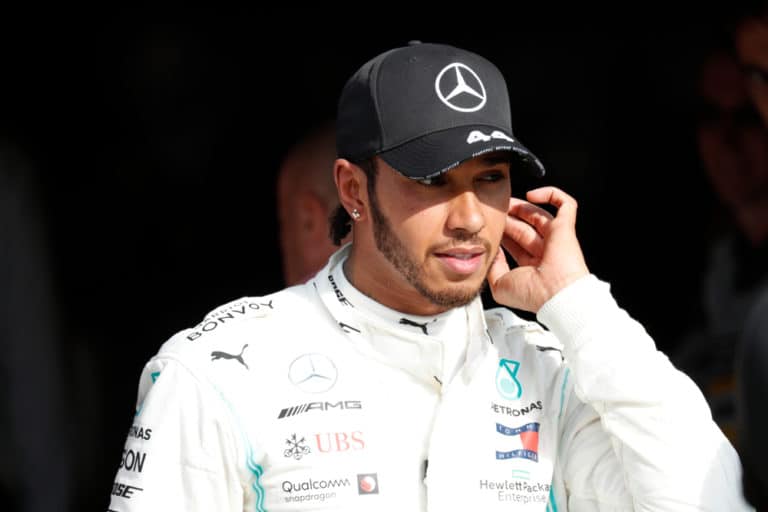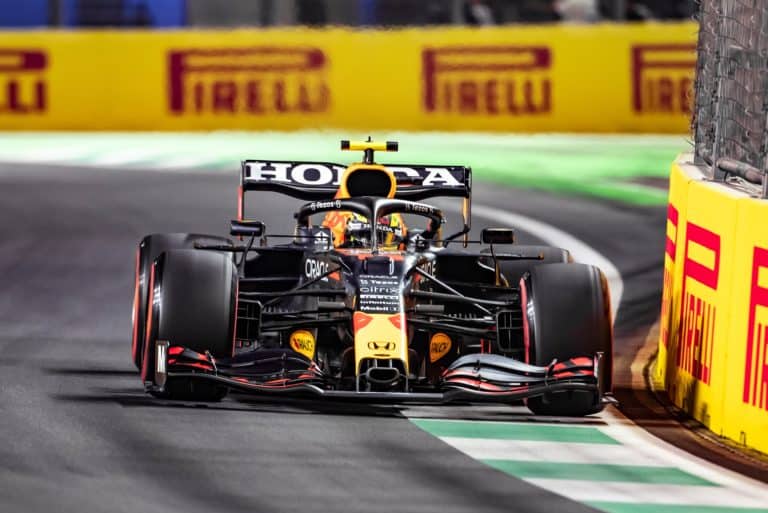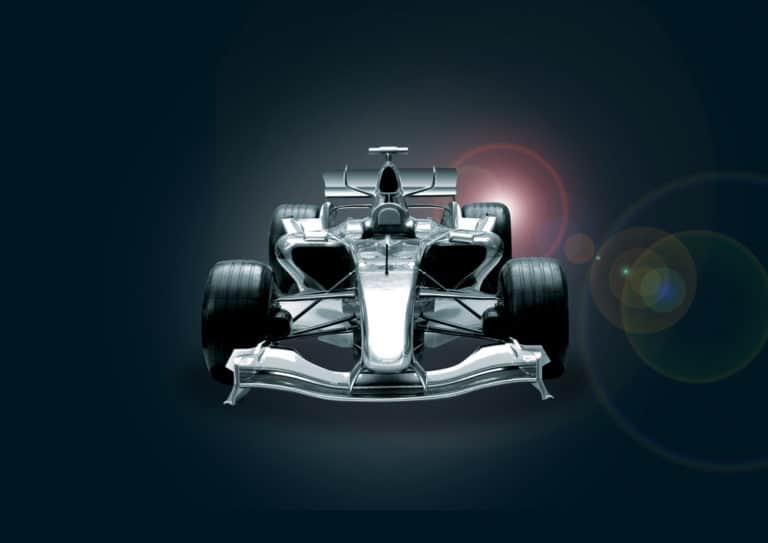With almost ninety million viewers worldwide watching a Formula 1 Grand Prix on television, and up to four hundred thousand spectators attending a race, there’s no question that this type of racing is hugely popular. But in a sport that costs billions of dollars annually, the controlling bodies must consider any changes that make the racing even more appealing to even more people.
DRS stands for Drag Reduction System, a new concept introduced in 2011 for that exact reason – to make Formula 1 more entertaining. DRS has remained one of Formula 1’s most controversial devices designed to facilitate overtaking, as Formula 1 enthusiasts argue over its effect on the sport.
Any discussion about DRS revolves around the question of effectiveness – what were the reasons for introducing it, how does it work, and has it achieved the intended results? Has DRS skewed the fight for the World Championship? Should it be scrapped?
If you’re looking for some F1 merchandise, check out the awesome stuff at the official F1 store here.
The Evolution Of Formula 1 Cars
To understand why DRS was considered necessary after sixty years of Formula 1 racing, let’s look at how the cars and their performance evolved and what role aerodynamics plays in the modern era.
The Early Years
Formula 1 first made its appearance in 1950, and the first generation cars were cigar-shaped, with front-mounted engines, either 1.5 liter supercharged or 4.5 liter normally aspirated.
Even then, prominent manufacturers such as Mercedes, Ferrari, and Alfa Romeo intended to use Formula 1 as a testing ground for innovation and development. By 1955 the cars were changing, with rear-mounted engines, wider tires, and lighter materials being used in their construction.
The Concept of Ground Effect Is Born
In the 60s and 70s, aerodynamics began to play a role in the design of the cars. The concept of aerodynamics involves four fundamental forces:
Lift – which needs to be avoided in a race car
Downforce – which keeps the car firmly on the track
Thrust – the forward acceleration of the car
Drag – the effect of air movement slowing the car
Innovators such as Colin Chapman, founder of Lotus, began to utilize aerodynamic theory in practical applications. Front and rear wings, side skirts, and shaped floor pans created downforce equivalent to about half the weight of the car, and the Lotus was described as being “painted to the road.”
The Complexities Of Modern Formula 1 Cars
As the designs of Formula 1 cars became more and more complex, the need to regulate the changes and limit the enormous development costs was recognized. There was a risk that only the biggest and wealthiest manufacturers would be able to compete and thus eliminate much of the competition.
Budget caps have been imposed in recent years, which have dramatically reduced the amount a team can spend in a season. From around $400 million before 2021, the budget for an entire year’s operation has been reduced to $140 million i and $135 million in 2022 and2023 respectively.
Wing design, floor pans, bodies, and side pods – in fact, all the elements affecting aerodynamics – are now regulated and standardized to the extent that the performance of each team’s car is hardly different from the rest.
The significance of this is that overtaking has become more difficult than ever, resulting in races becoming predictable and resulting, in turn, in spectator and viewer numbers stagnating and even dropping in the early 2000s.
The Reason For Introducing DRS To Formula 1
As mentioned, DRS is designed to make overtaking easier. It has been suggested that the 2010 Abu Dhabi Grand Prix was the catalyst for the introduction of DRS the following year.
In that race, the final Grand Prix of the season, the problem of “dirty air” and the driver’s inability to overtake the car in front saw Sebastian Vettel snatch the World Championship from Fernando Alonso in a rather unfortunate chain of events in which Alonso was stuck lap after lap behind a much slower car.
How “Dirty Air” Hinders Overtaking
The design of the modern Formula 1 car, with its advanced aerodynamic shape, allows it to cut through the air while retaining ground force, traction, and steering control.
However, it also has the effect of creating enormous turbulence or “dirty air” behind the car, which means the car behind loses its own aerodynamic efficiency and becomes difficult to control. It is then hard for the following car to get close enough to overtake, even if it is potentially the quicker car.
Less Overtaking, Greater Predictability, Less Excitement
The problem of dirty air and its effect on overtaking became a steadily more serious issue as Formula 1 races became more a matter of pitstop strategy than outright racing. With the different stables producing cars with more or less equal performance, the chances of winning a Grand Prix through sheer speed and driver skill became increasingly slimmer.
Teams relied increasingly on “undercutting” rather than overtaking to get past rivals on the track. Undercutting is a strategy where a car is pulled into the pits for required tire changes before a rival does so, in the hope that it will be able to re-join the race ahead of that rival and on quicker tires.
While pit wall strategy is perfectly legitimate, it detracts from the thrill of genuine racing. It was why it was decided to introduce DRS and reinstate overtaking as the best way to get the best car and driver to win the race.
How Does DRS Work?
DRS allows the driver to open a flap in the center of his car’s rear wing by pressing an activation button on the steering wheel when he is entitled to do so by control electronics.
By reducing the wing’s surface area and allowing air to flow more freely through instead of over the wing, aerodynamic drag is reduced, and the car can accelerate rapidly, with top speed higher by between 12km/h and 20 km/h. This makes overtaking the car in front (who doesn’t have DRS) a much quicker and easier.
That essentially is the simple mechanical explanation of how DRS works, but it’s obviously a lot more complex than just pressing a button to overtake the car in front. We’ll look at the details later when discussing the rules under which DRS operates.
For a quick informative video, check out the below video from YouTube.
The Rules Governing The Use Of DRS
The FIA is the international body governing Formula 1 and is responsible for every aspect of the sport. They have stipulated that the driver is not allowed to alter or change any component of the car during a race, except for DRS.
Without going into too much detail, the basic rules governing the use of DRS are:
1. The chasing car must be within one second of the car in front. The driver is informed electronically if he is within the one-second gap at the detection point.
2. The chasing car must be in a designated DRS zone (more about this later)
3. DRS can only be deployed once two racing laps have been completed after the start, after a restart, or after a safety car period.
4. DRS cannot be used by the car in front to defend their position unless they, in turn, are within one second of a car in front of them.
5. DRS may not be enabled if the Race Director decides that racing conditions are too dangerous.
During practices and qualifying, DRS can be used by the drivers even if they are alone on the track – the one-second rule doesn’t apply. Before 2103 they could deploy DRS anywhere on the track to reduce drag, but since then, it must be used only in the designated DRS zones.
What Is A DRS Zone?
All the Grand Prix circuits have at least one DRS zones, while Australia, Austria, Bahrain, Canada, Mexico, and Singapore have three DRS zones. (Australia briefly had four in 2022, but it was deemed too dangerous and reduced back to three.)
- DRS zones are limited to straights for safety reasons as the cars lose downforce and won’t corner as well as they need to. The exception is the inclusion in the DRS zone of gentle or very shallow bends.
- The start of the designated DRS zone is marked on track by a line and a “DRS” sign. This is known as the detection point. The one-second maximum gap between the cars is automatically measured at this point on the track.
- A second line marks the point at which DRS can be activated – this is the activation point at which the driver can use his activation button on the steering wheel to immediately alter the rear wing to gain speed and attempt the overtake.
- DRS is deactivated by control electronics as the driver brakes or decelerates before a corner, but it can be deactivated at any time before then by the driver.
Setting the positioning and length of the DRS zones is a complex task for race officials. They have to balance the need for overtaking opportunities with that of ensuring the safety of the drivers by allowing sufficient braking zones at the end of each straight.
What Happens If DRS Does Not Activate?
- If the control electronics fails to inform the driver that he is within one second of the car in front, the team can request the race director to allow the driver to override the system and activate his DRS. It is then the team’s responsibility to ensure that their driver adheres to the one-second limitation.
- Once the control electronics are repaired, the driver may not continue to override the system.
- The race director may deactivate DRS following a yellow flag, in the case of bad weather, or if he feels it would be unsafe to continue its use.
Who controls the DRS?
The driver controls the activation of the Drag Reduction System from within the cockpit of the car. The various Formula One teams use slightly different methods to allow the driver to engage the system, but it is usually by means of a button on the car’s steering wheel. However, during the race, there are strict guidelines from the FIA regarding when and where it can be activated – More of which later.
When the car enters the zone in which the DRS can be activated, the driver will hear an audio tone in his helmet, and, on top of that, an indicator on the steering wheel will also light up to let him know he can engage the system.
Here is a short clip of the system actually working on the rear wing of a Sauber Formula One car:
It is disengaged automatically when the brakes are applied, but some drivers, Lewis Hamilton is one such racer, prefer to deactivate the DRS manually before the braking zone, so they are at maximum downforce when they start braking.
Laurent Mekies, the chief engineer of the Toro Rosso Formula One Team, explains the automatic disengaging process under braking –
“The moment the driver starts braking for a corner, the flap automatically moves back to its original high-downforce position. We must also take into account the time it takes the flow of air to reattach, which takes about half a second”.
When can the Drag Reduction System be engaged?
On race day and during the actual race, the drivers cannot use the DRS anytime they wish to (as is the case during practice and qualifying). Laurent Mekies explains the process that allows the drivers to engage the system –
“There are timing loops embedded in the tarmac, and the system calculates the gap between all cars. When the pursuing car is within one second of the car in front when both cars cross the detection point, this turns on a light on the dashboard, and the driver can activate the DRS and try to overtake. The detection of the gap between the two cars and the lighting system is fully automatized. So it is the timing system that allows the DRS to be activated or not,”
The DRS can only be used once a driver has closed to within a second of the car ahead at a specified detection point, the DRS Zone, on the circuit.
Is DRS used during qualifying?
During the free practice sessions before race day and qualifying, the driver can use the DRS as and when they wish.
Laurent Mekies of Toro Rosso explains how the drivers utilize the Drag Reduction System during practice sessions –
“We don’t need to do computer simulations to know where to use the DRS. The driver must activate it everywhere, with the obvious exception of the corners. There’s always a gain in lap time when using the DRS as often as possible.”
How many times can it be used during the race?
Drivers can only start using the Drag Reduction System when they have completed two racing laps. After that point, if the timing loop system indicates a driver that he is within the parameters set by the FIA that will allow him to engage the system, he is free to do so as many times as he wishes to. However, the race leader can use the DRS only when he is lapping the field.
The advantages and disadvantages of the Drag Reduction System
The advantage of the DR system is readily apparent, so the implementation of the Drag Reduction System has fulfilled the aim of the FIA for there to be more overtaking in the sport. There is now somewhat more “overtaking” than in the years leading up to 2011.
However, the question remains: have the FIA achieved its desire to make motorsport a more engaging spectacle for the fans? Have they succeeded in providing a more attractive financial proposition for the sponsors who, ultimately, rely on motor racing fans to tune in on television to watch their teams attempt to win a race? Eyeballs on television screens translate to money in the bank.
Many commentators have decried the Drag Reduction System as “artificial,” “not real racing,” and that it actively discourages real overtaking because it makes it tactically smarter for the driver to wait until they are in the DRS zone rather than make a risky overtaking move anywhere else on the circuit.
That it is precisely these “risky” overtaking maneuvres that the real racing fans tune in to see. This corner overtaking action was what made Formula One racing in earlier years the great spectacle it was. It is certainly safer and even faster these days, but some would say that the package as a whole has been sanitized.
The problem for the FIA remains. And that problem can be summed up in two words: Dirty Air. This is something that is still waiting to be resolved.
Effectively, the overriding issue that has made overtaking so infrequent in the years before the adoption of DRS is the amount of dirty, or turbulent, air thrown back off the wings, flaps, and bodywork of the leading car onto the following cars.
Formula 1 cars are highly reliant on their aerodynamics for grip. The closer a race car gets to the one in front of it, the more turbulent the air in which it is driving becomes, and the less grip the car has as a consequence.
Because of this issue, even equally well-matched Formula One cars will struggle to follow each other closely enough to attempt to overtake in a corner.
As a result of this turbulence, it is difficult to follow the lead car closely enough around a corner, so by the time they get to a straightaway, the gap is more often than not too large for the following car to get alongside the leading car to attempt to overtake before the next corner.
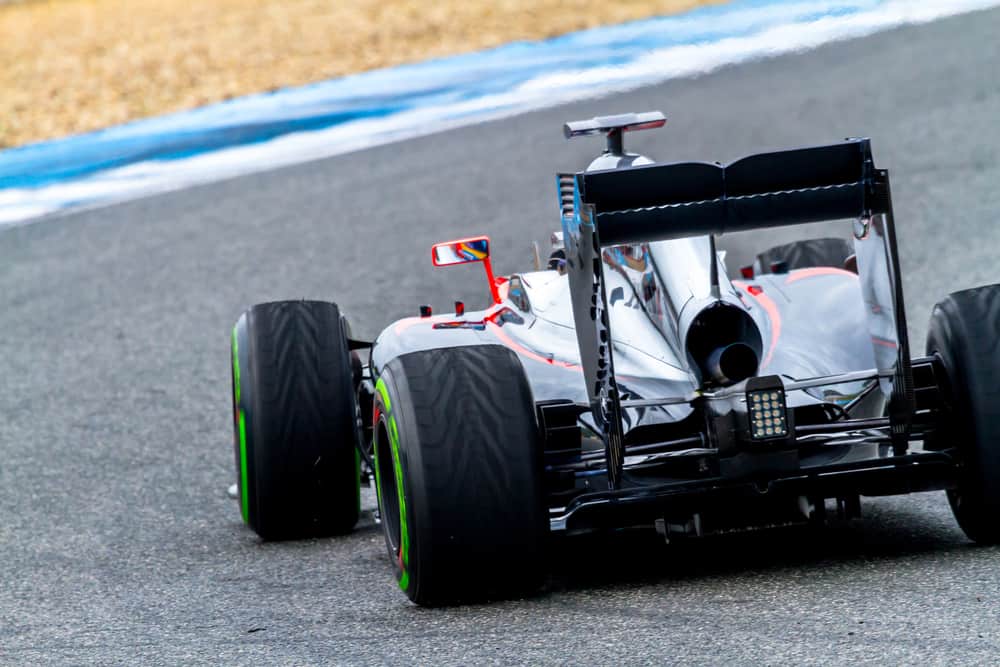
Is DRS Exclusive To Formula 1?
Initially, it was felt that dirty air, undercutting, and the overtaking issue were Formula 1 problems, and so the DRS solution was a Formula 1 solution.
Some type of overtaking assistance system has been used in other forms of motor racing. In the IndyCar series, they utilize “push to pass,” which, rather than an aerodynamic adjustment, gives the driver a power boost to allow easier overtaking.
“Push to pass” can be used anywhere on the track at any period during the race but only for a limited time, giving the drivers the discretion to employ it at the beginning to get an early advantage or maybe at the end to beat off a challenge.
There are some interesting elements in “push to pass,” which could possibly be introduced to Formula 1 in the future.
The DRS system is also used in Formula 2 and Formula 3 in the support programs for Formula 1 and in Formula Renault 3.5, Super Formula, and Deutsche Tourenwagen Masters.
Has DRS Achieved Its Intended Goal In Formula 1?
DRS has been a controversial system since it was first introduced in 2011. From a practical point of view, it succeeded in increasing overtaking opportunities during the race, but did that result in a more exciting Grand Prix series?
The Opinions Of Drivers And Fans Differ
Drivers’ opinions: Juan Pablo Montoya, IndyCar driver and an ex-Formula 1 driver, famously compared DRS to “giving Picasso Photoshop .”Ex-World Champion Sebastian Vettel said he would prefer throwing bananas at his rivals to keep them at bay.
But Fernando Alonso, arguably the most talented Formula 1 driver of the modern era, firmly believes that DRS is essential for the health of Formula 1.
The Arguments In Favor Of and Against DRS
DRS has always been a controversial topic, and there are undoubtedly good reasons for and against retaining it in Formula 1
- Those in favor point out that it has made racing more exciting to watch and increased the wheel-to-wheel action that had been missing. It also reduced pitstop strategy’s role in deciding a winner and made the race more about driver skill and speed.
- The main argument against DRS is that it creates an artificial situation where one car has the advantage of better aerodynamics and higher speed while the other is unable to defend its position. There’s nothing exciting about watching one car simply cruise past another.
Fans’ opinions: In an older survey, 34% felt that DRS rules should continue unchanged, 33% felt that drivers should be free to use DRS anywhere on the track, and 33% argued for allowing limited use, similar to “push to pass .”Respondents were not asked whether DRS should be scrapped altogether, but the survey did indicate that changes were called for and that other systems had something to offer.
In a different survey in 2020, only 12% of the fans voted to scrap DRS – a surprising result given the level of criticism DRS receives. However, only 43% voted to keep DRS, and 45% favored scrapping it, but only after the new regulations were enacted in 2022.
While DRS has its supporters among fans and drivers alike, it seems generally recognized by drivers and spectators that it hasn’t been an unqualified success. Some Formula 1 fans feel that the rules should allow overtaking without the need for an intervention. Others think that DRS is an asset on racetracks that provide minimal opportunity for drivers to get past slower cars.
DRS Works Better At Some Circuits Than Others
Several factors contribute to the effectiveness of DRS at the various circuits. Some of these factors include track surfaces, where the DRS zones are positioned, the number of suitable straights, and the optimum downforce for that specific track.
High downforce tracks rely on downforce through corners to get the maximum performance out of the cars, rather than power circuits where speed along the straights is more critical.
- High downforce circuits include Hungary, Monaco, Singapore, Spain, and Imola. Fewer, shorter straights and more and tighter turns mean that drivers will have less opportunity to deploy DRS and rely on downforce to give them more control and higher entry speed into the corners.
- Power circuits such as Monza, Mexico, Canada, Baku in Azerbaijan, and Austria, require minimal downforce as they have fewer corners and long fast straights. The cars are set up to take advantage of their potential speed, but DRS still plays a big part in overtaking maneuvers.
- Other tracks, like Albert Park, a street circuit in Melbourne, Australia, and Silverstone in England, are challenging because they have a combination of complex corners requiring downforce and fast sections where drag needs to be minimized for maximum speeds to be attained.
Controversial Effects Of DRS In Races
The rules governing the use of DRS in a race can lead to questionable tactics being used by drivers, and possibly the best illustration of this occurred during lap 37 of the 2021 Saudi Arabian Grand Prix.
Lewis Hamilton and Max Verstappen, both contenders for the World Championship, collided with each other directly due to DRS. Verstappen slowed to let Hamilton past, intending to use DRS on the straight to take the lead. Hamilton, presumably wise to this, refused to pass, and both drivers slowed down on the fastest part of the track. Verstappen then allegedly braked, and Hamilton collided with him, damaging his front wing.
Verstappen got a 10-second penalty for his antics. Still, the incident highlights a weakness in the DRS and is one that its critics have used to strengthen their argument for its scrapping.
The DRS Train – Another Negative Effect?
Another weakness of DRS in the race situation is the reasonably common creation of a DRS train. This occurs when a relatively slow lead car is being driven defensively, followed by several other cars, all of which are within one second of each other. As all the following cars have the use of DRS, its effect is canceled out, and no one can overtake.
The way to get out of the train is for the first chasing car to overtake. Then the others have an opportunity one at a time to do the same as they get to the head of the line – a very frustrating and time-consuming operation. The alternative is to pit the car for a tire change, remove it from the train and try to undercut it with better lap times on fresher tires.
But hold on – wasn’t the undercut maneuver and pitlane strategizing one of the main reasons for introducing DRS?
New Technology – Does It Spell The End for DRS?
With the development of hybrid power in 2013, running in tandem with a small, supercharged combustion engine are two hybrid systems, one harvesting energy under braking and the other from the supercharger.
These KERS (kinetic energy recovery system) innovations have countered, to some extent, the advantage of DRS. They also give the driver access to additional power to overtake or to defend an overtaking maneuver by pushing the “overtake” or state of charge button. The recovered energy is limited but allows the driver about 30 seconds of boost per lap before further recovery is needed.
Over and above this development, drastic changes in Formula 1 rules in 2022, with more to come, have dramatically reduced the amount of dirty air behind the car. Re-designed front and rear wings, side pods, and floor pans have resulted in what dirty air is still being produced going over the car behind instead of into it.
Consequently, it is now possible for a chasing car to get inside the one-second gap without losing as much downforce, and overtaking is therefore not as difficult. With further changes already planned for the next three years, it appears to be a pretty strong possibility that DRS will be phased out by 2026.
Conclusion
It’s generally accepted that DRS was introduced for good reason – cars were uniformly quick, “dirty air” generated by sophisticated aerodynamics had made overtaking more and more difficult. Formula 1 fans were losing interest in the sport. When billions of dollars were being spent on product development and holding races worldwide, something had to be done.
For better or worse, overtaking did become more straightforward, and races indeed were less predictable after DRS was introduced in 2011. Today, with hybrid power, energy recovery, and the dirty air problem almost a thing of the past, the question is not whether DRS should be abolished but rather when it will happen. The next three years may well provide the answer.
References
- https://www.autosport.com/f1/news/what-is-drs-f1-how-does-it-work/
- https://the-race.com/formula-1/should-f1-bin-drs-our-verdicts-and-yours/
- https://f1chronicle.com/what-is-formula-1-drs-formula-1-technology/
- www.racedepartment.com/news/should-drs-be-removed-from-formula-1

